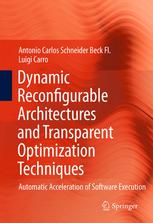

Most ebook files are in PDF format, so you can easily read them using various software such as Foxit Reader or directly on the Google Chrome browser.
Some ebook files are released by publishers in other formats such as .awz, .mobi, .epub, .fb2, etc. You may need to install specific software to read these formats on mobile/PC, such as Calibre.
Please read the tutorial at this link: https://ebookbell.com/faq
We offer FREE conversion to the popular formats you request; however, this may take some time. Therefore, right after payment, please email us, and we will try to provide the service as quickly as possible.
For some exceptional file formats or broken links (if any), please refrain from opening any disputes. Instead, email us first, and we will try to assist within a maximum of 6 hours.
EbookBell Team

5.0
78 reviewsAs Moore’s law is losing steam, one already sees the phenomenon of clock frequency reduction caused by the excessive power dissipation in general purpose processors. At the same time, embedded systems are concentrating several heterogeneous applications in a single device, and hence new architectural alternatives are necessary. Reconfigurable computing has already shown to be a potential solution when it comes to accelerate specific code with a small power budget, but significant speedups are achieved only in very dedicated dataflow oriented software, without capturing the reality of nowadays complex heterogeneous systems. Moreover, any architecture solution should be able to execute legacy code, since there is already a large base of applications and standards.
Dynamic Reconfigurable Architectures and Transparent Optimization Techniques presents a detailed study on new techniques to cope with the aforementioned limitations. First, characteristics of reconfigurable systems are discussed in details, and a large number of case studies is shown. Then, a detailed analysis of several benchmarks demonstrates that such architectures need to attack a diverse range of applications with very different behaviours, besides supporting code compatibility. This requires the use of dynamic optimization techniques, such as Binary Translation and Trace reuse. Finally, works that combine both reconfigurable systems and dynamic techniques are discussed and a quantitative analysis of one them, the DIM architecture, is presented.